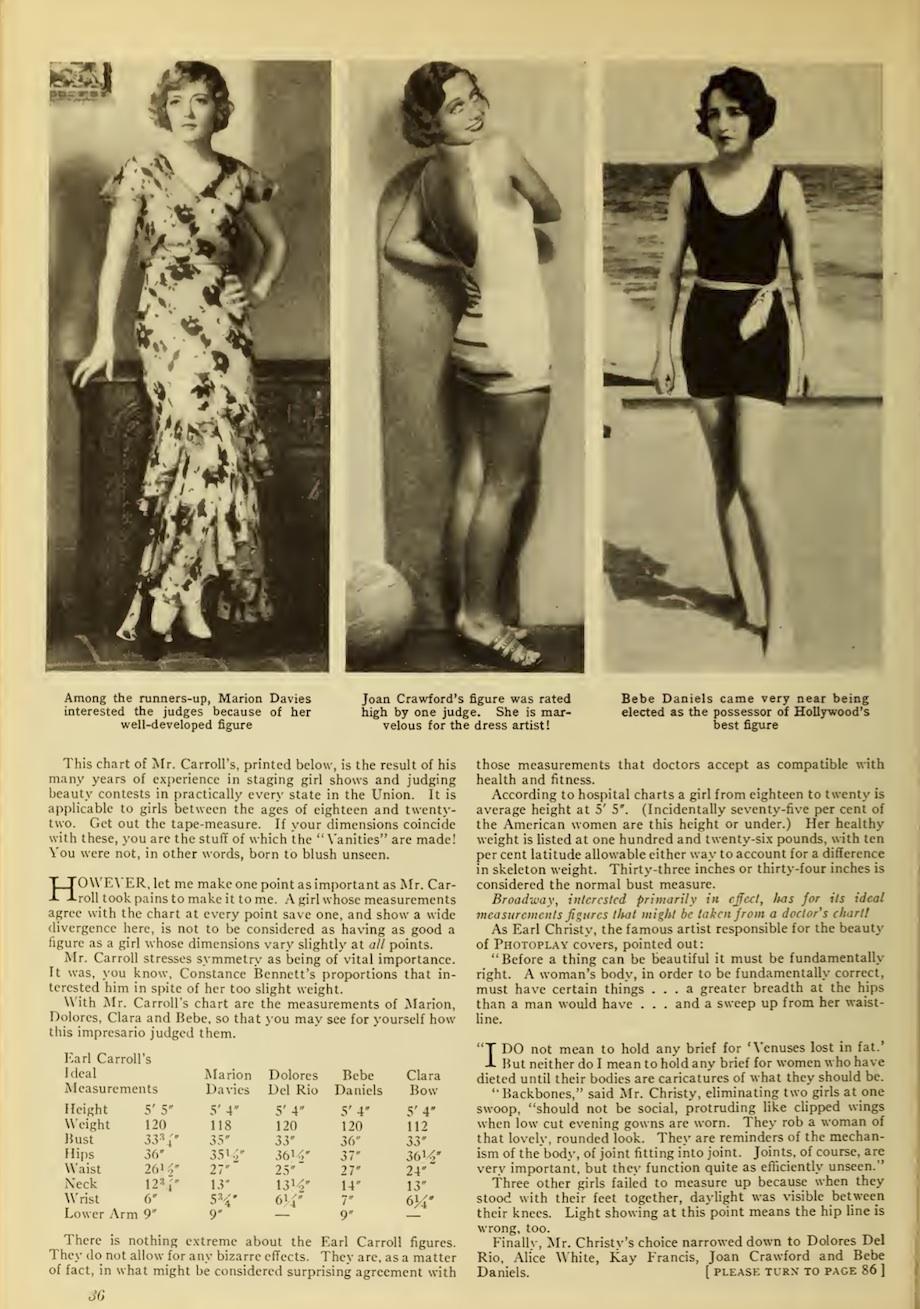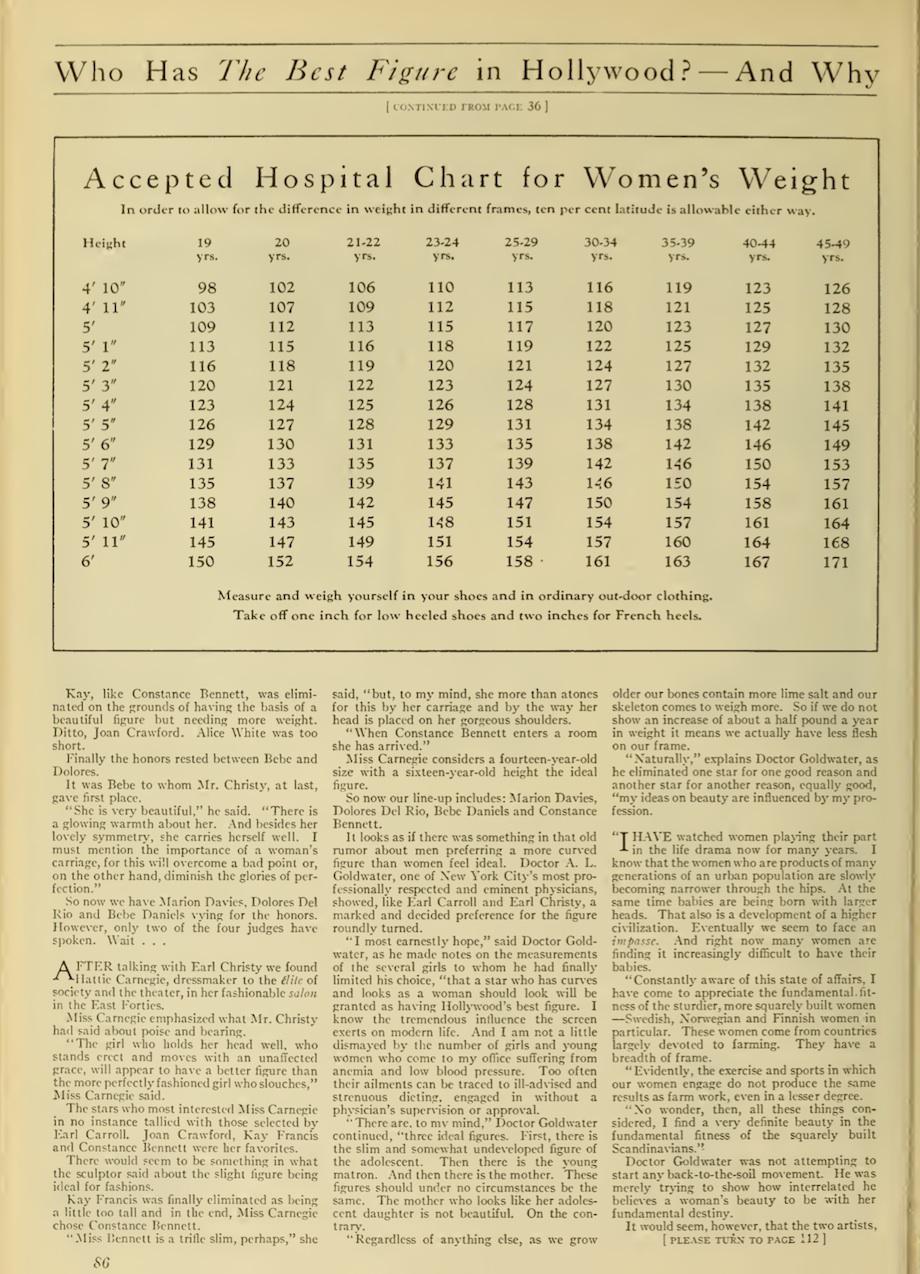The Vault is Slate’s new history blog. Like us on Facebook; follow us on Twitter @slatevault; find us on Tumblr. Find out more about what this space is all about here.
This article comes from the March 1931 issue of Photoplay, the premier fan magazine of Hollywood from its 1911 founding through the 1950s.
Photoplay was the reigning arbiter of “good taste” within Hollywood, a fierce defender of the industry at large, and like the rest of the mainstream fan magazines during this time, a mouthpiece for studio publicists. While the fan magazines weren’t owned by the studios, they operated symbiotically. The studios provided access to the stars and advertising dollars, sometimes even going so far as to write or vet copy. In turn, the magazines promoted the stars and the movies in which they appeared—to an audience of millions.
To a modern viewer sensitive to body issues, this article seems abhorrent—the four “judges” are explicitly assessing women’s measurements. The piece includes a sidebar featuring what were likely studio-proffered specifics about stars’ bodies, against which fans would naturally measure themselves.
But the article is also a clear reaction to the streamlined, boyish, gender-bending silhouette that characterized the “flapper craze” of the 1920s:
The general notion of what is a good figure no longer seems to be what it was a year or more ago, influenced by the unsound fad which glorified boyish forms. Mrs. and Miss America survived on lamb chops and pineapple, oranges, and lettuce.
The “winner” of Photoplay’s “contest” was Dolores Del Rio, a popular silent star (Resurrection, 1927; Evangeline, 1929) who had successfully navigated the transition to “talkies.” Del Rio was not only Hispanic but boasted a fuller figure that challenged the standard emulated by (white) stars of the time.
Why would Photoplay have made such a seemingly progressive choice? Del Rio’s “victory” was not based on fan votes—and Photoplay surely had input on the judges’ final decision. In some cases, this sort of profile would be published to help promote an upcoming film or to neutralize negative gossip. In this case, the featured picture of Del Rio, healthy and seemingly happy, helped assuage concerns over her extended screen absence due to a kidney infection. While offering this reassurance, the magazine just happened to promote a more realistic female body image along the way.

Image courtesy of the Media History Digital Library.

Image courtesy of the Media History Digital Library.

Image courtesy of the Media History Digital Library.

Image courtesy of the Media History Digital Library.

Image courtesy of the Media History Digital Library.